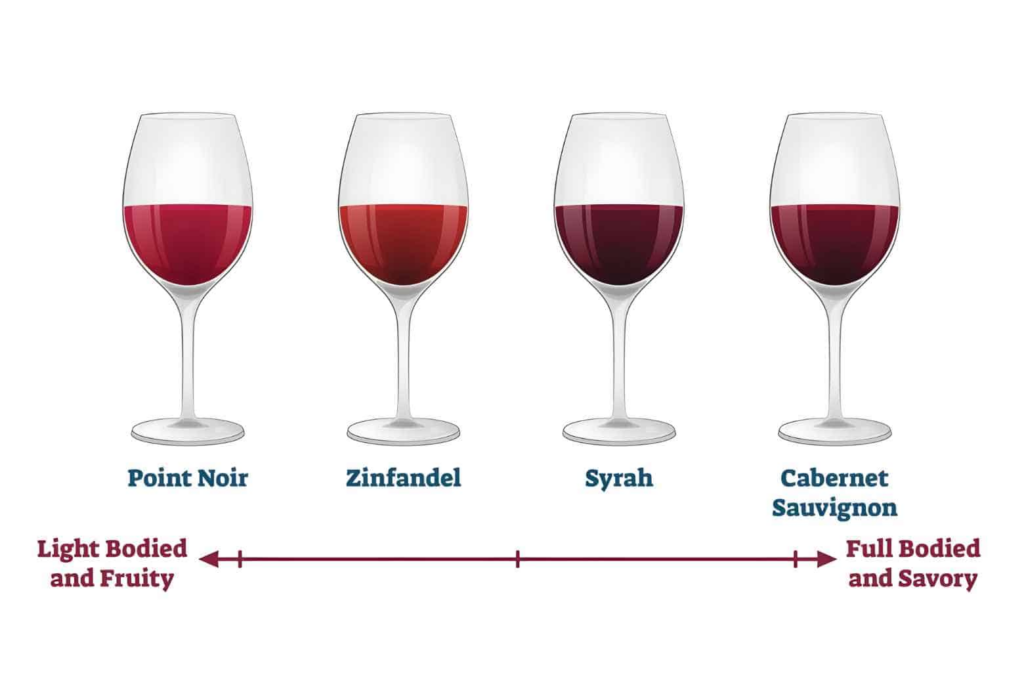When it comes to wine, the body plays a crucial role in how we experience its taste. But what exactly is the body of a wine? To simplify, think about the difference in how whole milk feels in your mouth compared to skimmed milk. There’s a noticeable difference, right? That’s because of the fat content. Wine body works in a similar way. The heavier and richer it tastes, the more full-bodied it is. However, there are several factors that contribute to a wine’s body.

5 Factors Influencing Wine Body
a) Grape Variety: The grape variety is a significant factor in determining the body of the wine. For example, Pinot Noir, Gamay, and Cinsault are known for producing lighter-bodied wines. On the other hand, Malbec, Cabernet Sauvignon, and Syrah are typically more full-bodied.
b) Alcohol Level: The alcohol content of a wine can also give you a clue about its body. Wines with an alcohol content above 14% generally tend to be more full-bodied, while those with lower alcohol levels are often lighter in body.
c) Tannins and Acidity: Wines with higher acidity, lower alcohol, and less tannin tend to be lighter-bodied. Conversely, wines with lower acidity, higher alcohol, and more tannins are usually fuller-bodied.
d) Oak Aging: Another factor to consider is oak aging. Wines aged in new oak barrels often taste richer and more full-bodied. This information is sometimes noted on the wine label, so it’s worth checking.
e) Climate: A good rule of thumb is to consider the climate where the grapes are grown. Grapes grown in warmer climates typically produce fuller-bodied wines, while those from cooler climates are often lighter.
Share Your Knowledge
Now that you have these tips, share them with a friend the next time you’re opening a bottle of wine. Understanding the body of wine not only enhances your tasting experience but also helps you choose the right wine for every occasion.
